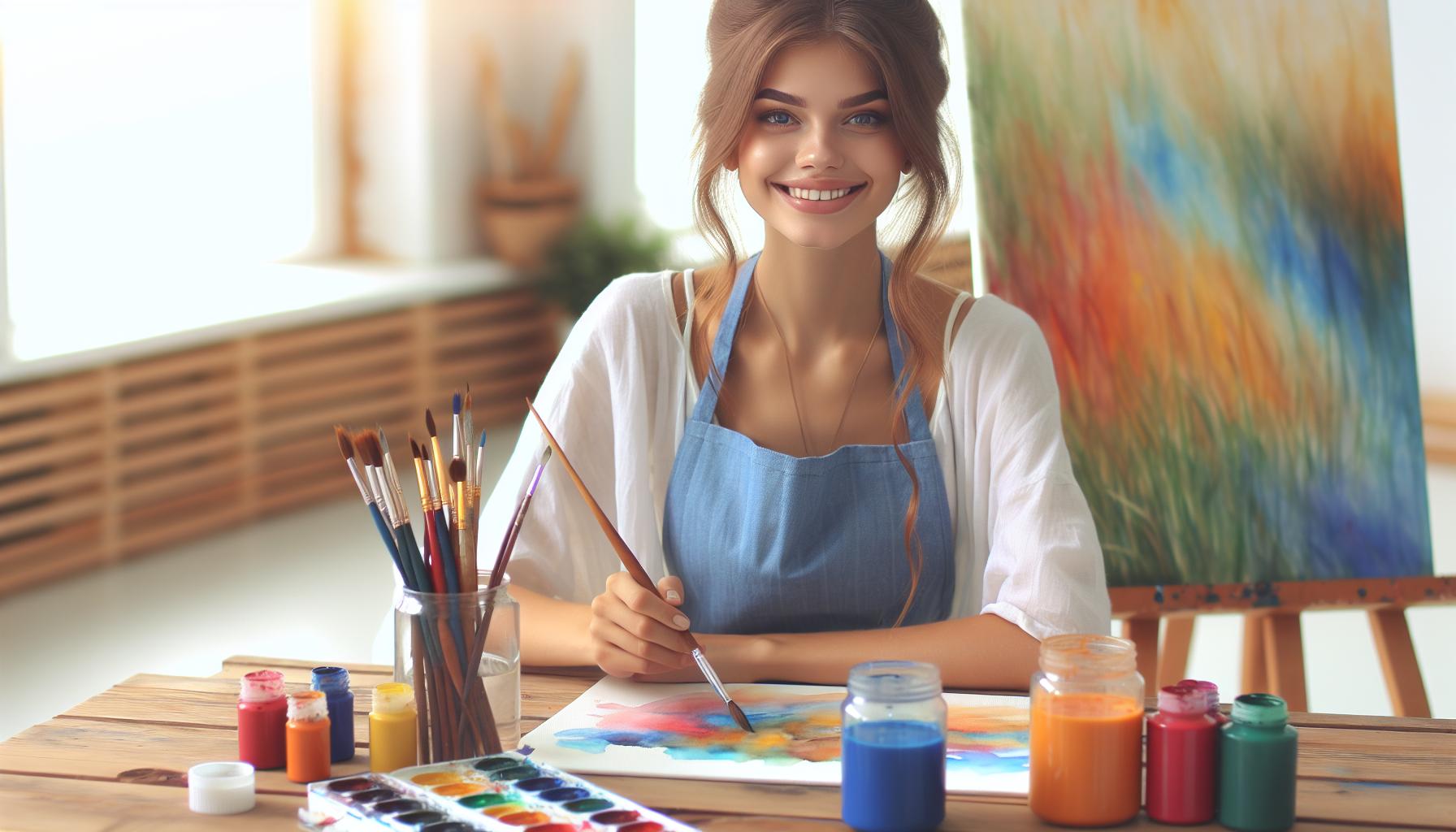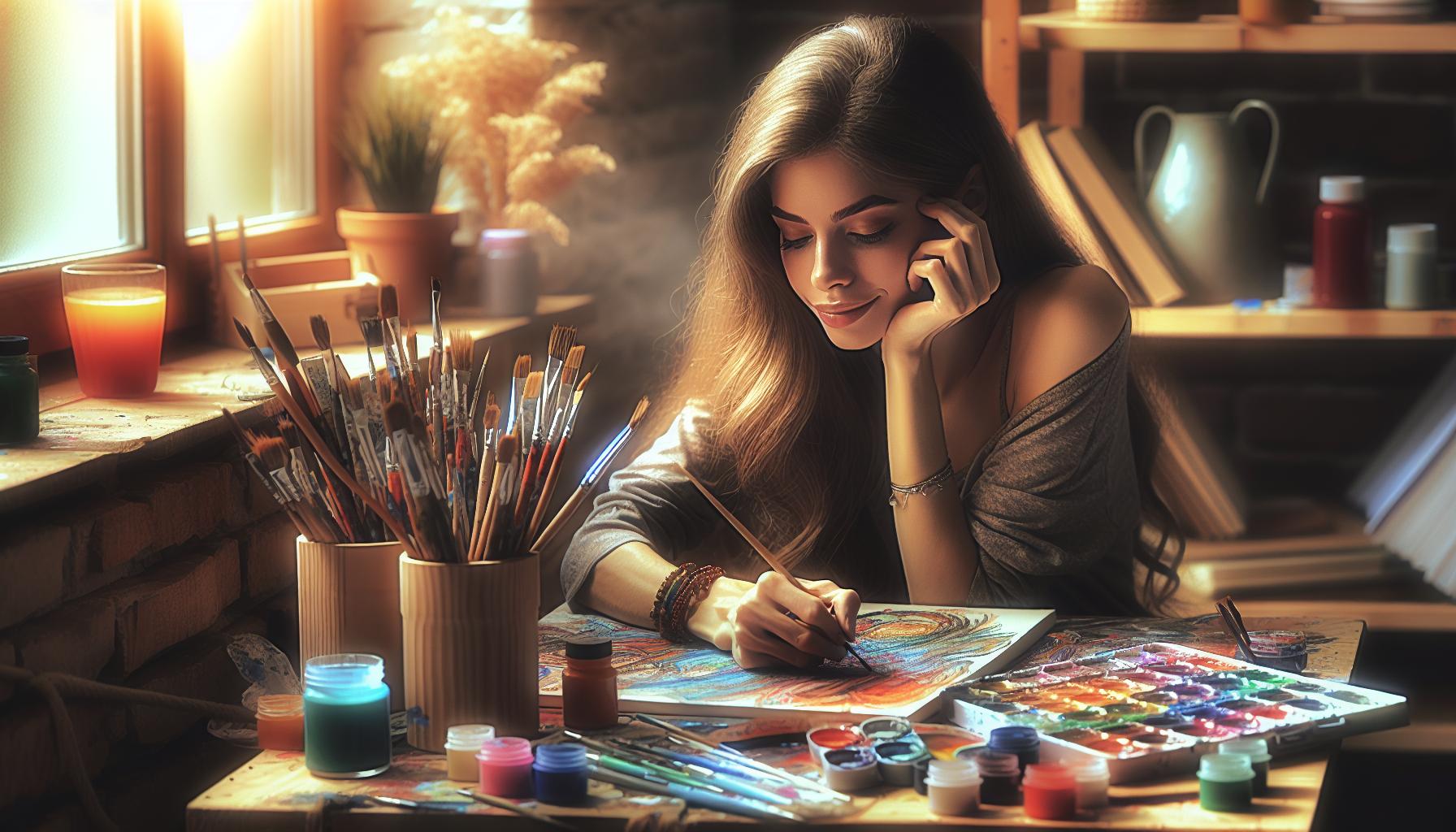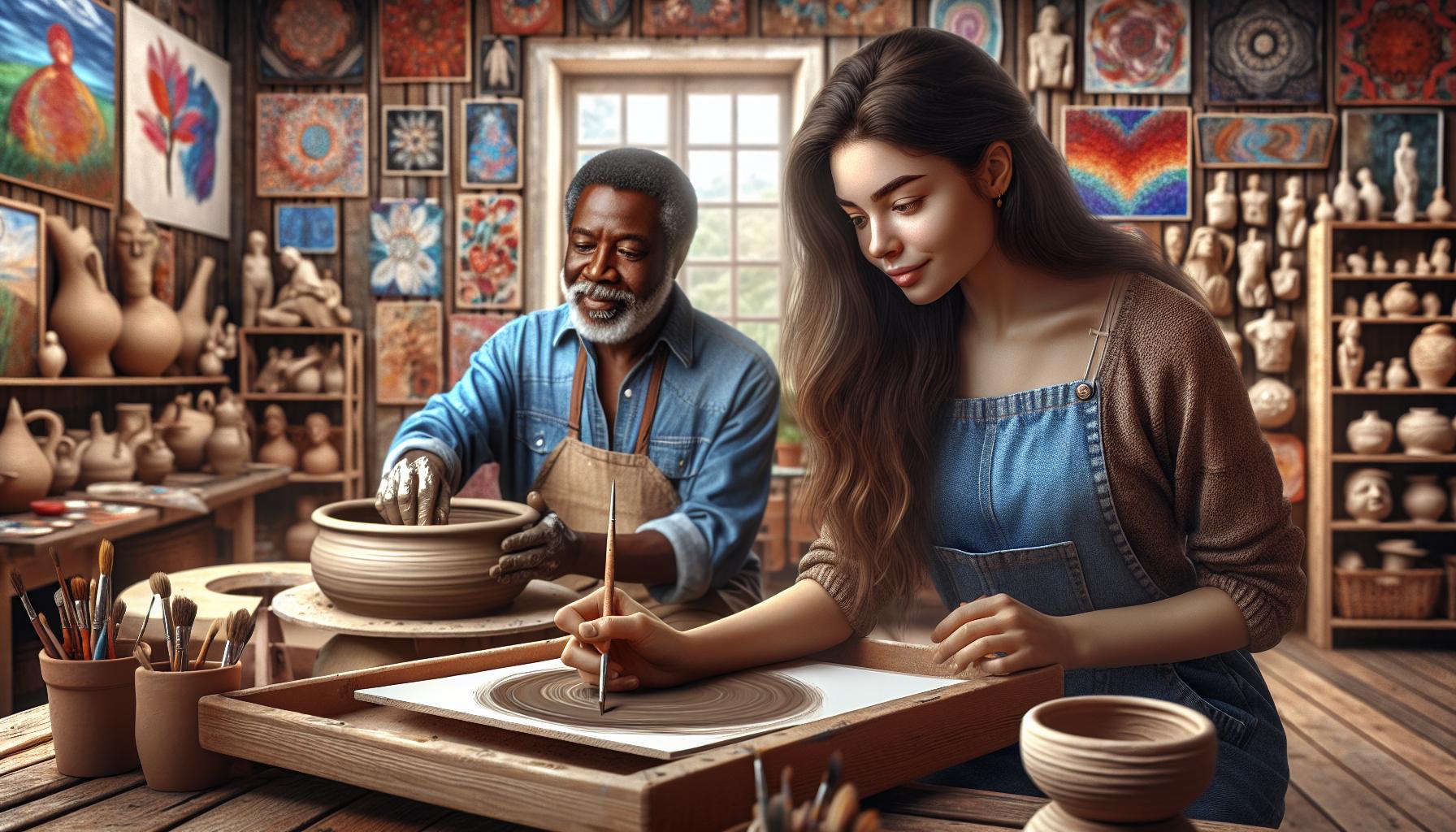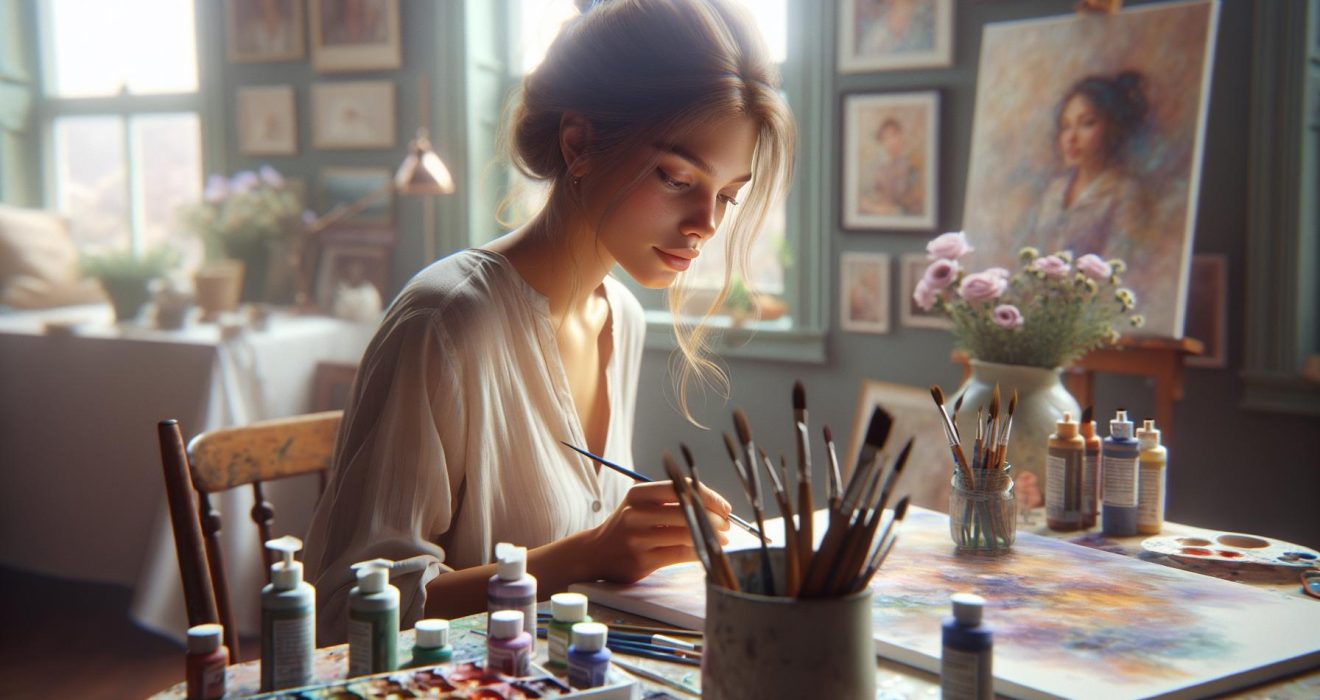How Art Therapy Boosts Emotional Expression and Stress Management
I’ve always believed that there’s a unique kind of magic in creating art, something that soothes the soul and quiets the mind. Imagine then, using art not just for pleasure, but as a tool to manage stress and express emotions that words sometimes can’t capture. This is the essence of art therapy—a gentle yet powerful path to emotional well-being that anyone can explore, regardless of artistic skill.
Lately, I’ve delved deeper into how this creative practice can be a sanctuary for those of us feeling overwhelmed or seeking new ways to release pent-up emotions. It’s fascinating to discover that with just a few strokes of paint or molding a piece of clay, one can start a journey towards healing and understanding oneself better. Join me as we uncover the therapeutic powers of art, and perhaps find a new, joyful way to enhance our daily lives.
Understanding Art Therapy
Diving into art therapy, it’s like giving your brain a spa day! Let me break down how this creative form can be your go-to stress buster and a window to express those tricky emotions.
What Is Art Therapy?
Art therapy, in a nutshell, is where creativity meets mental wellness. It’s a professional field that combines art and psychology to help people explore emotions, develop self-awareness, and cope with various challenges, like stress and emotional turmoil. In these sessions, you don’t need to be the next Picasso; it’s all about expressing what’s inside. You could be doodling, painting, sculpting—or if you’re like me—probably making a gloriously messy collage. The goal? To communicate what words can’t always capture and to understand yourself deeper through your own art creations.
Benefits of Art Therapy for Stress and Emotion
Why turn to art therapy for stress and emotion management? First, it’s incredibly calming. Just imagine replacing those anxiety loops in your head with focused art-making. You’re in a zone, where only your creation matters—it’s meditation in disguise!
Second, art therapy boosts your emotional IQ. Processing feelings via art can illuminate emotions you didn’t even know you had. Ever feel better after a good cry at a sad movie? It’s similar with art. Sometimes seeing your own emotions painted out can be super enlightening.
Exploring Art Therapy Techniques

As we delve into the world of art therapy, let’s discover how various artistic methods help manage stress and foster emotional growth. Art isn’t just about creating; it’s about communicating what’s inside you in a language beyond words.
Painting and Drawing
When it comes to painting and drawing, the magic lies in the strokes. Whether you’re swiping a brush dipped in vibrant colors across a canvas or sketching outlines with a pencil, these activities serve as powerful tools for stress relief. I’ve found that the rhythmic motions of painting can be incredibly soothing. The act of focusing on your artwork allows you to shut out the chaos and hone in on the moment, akin to the benefits of mindfulness exercises. For instance, creating a series of watercolor landscapes not only boosts your mood but also enhances your connection to nature, which can be deeply therapeutic.
Sculpture and Clay Work
Sculpture and clay work take a more tactile approach. The physicality involved in molding materials like clay or sculpting stone engages both the body and mind. This hands-on process can be particularly effective for expressing emotions that are hard to articulate with words. As you knead and shape the clay, you’re essentially working through your stress and anxiety. I’ve noticed that many people find clay work therapeutic because it gives a sense of control over the malleable material, reflecting the control they can regain over their emotions.
Collage and Mixed Media
Collage and mixed media are all about layering—an apt metaphor for how we manage feelings. By combining various materials such as paper, fabric, and photographs, you can create a visual journal of your emotional landscape. This technique allows for great versatility and personalization, offering a unique way to depict and dissect complex emotions. Collages can serve as a visual exploration of your thoughts, helping to unveil and understand feelings that might have been buried deep down. Plus, the playful aspect of mixing media can add a light-hearted touch to your therapeutic practice, making it an enjoyable and insightful experience.
Setting Up Your Art Therapy Space

Creating your art therapy space is the first step to turning those stress waves into creative ripples. Let’s make a place that invites calmness and inspires your inner artist.
Choosing the Right Materials
Picking the perfect art supplies isn’t just about what’s on sale at the local craft store. It’s about finding tools that feel right in your hands and ignite your creativity. Start with the basics:
- Paper: Thick, quality paper that won’t bleed through, whether it’s for watercolor, sketches, or pastels. Textures can vary, so maybe grab a few to see what strokes your creative fancy.
- Brushes and pens: Comfort is key, so choose sizes and grips that fit well in your hand. Beware of the scratchy bristles!
- Paints and crayons: Watercolors or acrylics? Oil pastels or wax crayons? Experiment with a few. Remember, brighter colors can energize, while softer shades tend to soothe.
- Clay: If molding and sculpting calm your nerves, clay can be therapeutic. Plus, squishing something legally is always fun.
Mix and match these tools according to what tugs at your creative strings. There’s no one-size-fits-all here!
Creating a Calming Environment
Your environment massively influences your mood and creativity. So, it’s crucial to make your art therapy corner your stress-free sanctuary. Here are a few tips:
- Lighting: Natural light does wonders, but soft artificial lights can also create a peaceful ambiance. Avoid harsh fluorescents that scream office vibes.
- Seating: Comfortable seating is non-negotiable. A cozy chair or even a floor cushion can make your art-making sessions more inviting.
- Inspiration: Surround yourself with items that spark inspiration. It could be photos, a vase of fresh flowers, or even a board of quotes and art clippings.
- Organized chaos: Keep your materials accessible but tidy. A little organized chaos can inspire, but too much mess might stress you out further.
Integrating Art Therapy into Your Routine

Integrating art therapy into your daily routine isn’t just about creating masterpieces; it’s about carving out a personal nook of peace and self-expression. So, grab your paintbrush (or crayons, no judgment here!) and let’s dive into turning those stressful days into colorful expressions.
Daily Practices
Starting an art therapy habit helps keep the mental cobwebs at bay. I recommend setting aside a specific time each day for your creative workouts. Maybe it’s those quiet morning hours or the golden light of late afternoon that inspires you. The key is consistency. Like brushing your teeth, but way more fun, committing to daily art sessions trains your brain to switch from stress-mode to zen-mode.
Begin with simple activities. A doodle a day keeps the stress away! You don’t need fancy supplies—just start with a pen and paper. Gradually, you could evolve into painting or sculpting as you get more comfortable expressing yourself through various mediums.
Another tip? Keep a dedicated art therapy journal. Tracking your progress and reflecting on your emotional journey can be incredibly rewarding. It’s not just about the finished product but about the therapeutic process. Watching your emotions and skills evolve on paper can be another source of motivation.
Incorporating Mindfulness and Reflection
Merging mindfulness with art therapy enhances its stress-relieving powers. Start your art session with a few minutes of meditation. Close your eyes, take a deep breath, and let go of your day’s worries for a bit. When you open your eyes, channel those calmer vibes into your artistic creations.
Reflection is also crucial in art therapy. After each session, take a moment to ponder what you’ve created. What emotions does it bring up? What does your choice of colors and shapes tell you about your state of mind? This practice not only deepens your self-awareness but also boosts your emotional intelligence.
Integrating questions can also propel your practice. Ask yourself, “What am I grateful for today?” or “What was a challenge I faced?” Use these prompts to guide your artistic expression. It transforms your art into a visual journal that not only captures your emotional landscape but also explores your inner resilience.
Remember, the goal is not to judge your artistic skill but to embrace the process as a healing tool. Each stroke, each color choice is a step toward managing your stress and enhancing your emotional well-being.
Success Stories and Case Studies

Real-Life Impact of Art Therapy
Art therapy isn’t just a buzzword; it’s a lifeline for many. Let me showcase how real people, from stressed-out students to overwhelmed executives, found solace and expression through this creative escape. Their journeys illustrate not only the calming effects of art therapy but also its profound ability to unlock emotional expression.
A college student named Emily shared how art therapy helped her manage severe anxiety during her finals. Initially skeptical, she began with simple sketching sessions. Over time, Emily found that these sessions not only reduced her panic attacks but also improved her concentration in studies. The transformation was so significant that her academic performance saw a noticeable improvement, all thanks to the mindfulness and stress relief fostered by art therapy.
Then there’s John, a middle-aged corporate worker dealing with burnout. Feeling detached and unfulfilled, he turned to pottery, a form of art therapy suggested by his therapist. The tactile experience of molding clay brought John a sense of control and presence he hadn’t felt in years. It became his weekly ritual, not only aiding in his emotional recovery but also igniting a passion he decided to pursue as a side business.
These stories highlight the tangible benefits of incorporating art therapy into daily routines. Art therapy offers a personalized approach to mental wellness, proving its effectiveness across different ages and professions. It’s more than just an activity; it’s a gateway to understanding and managing emotions, paving the way for a balanced and fulfilling life.
Conclusion
Art therapy isn’t just a hobby; it’s a powerful tool for self-care and emotional exploration. Through the simple act of creating you can find solace and understanding in the midst of chaos. I hope this exploration into art therapy has inspired you to pick up a brush or a piece of clay and start your own journey towards emotional clarity and resilience.
Remember there’s no right or wrong way to engage with art therapy—it’s all about what feels right for you. Whether you’re sketching quietly or molding something new out of clay each artistic endeavor is a step toward managing your stress and enhancing your emotional well-being. So set up your space grab your tools and let your creativity flow. Here’s to finding peace and expression in every stroke and sculpture!

